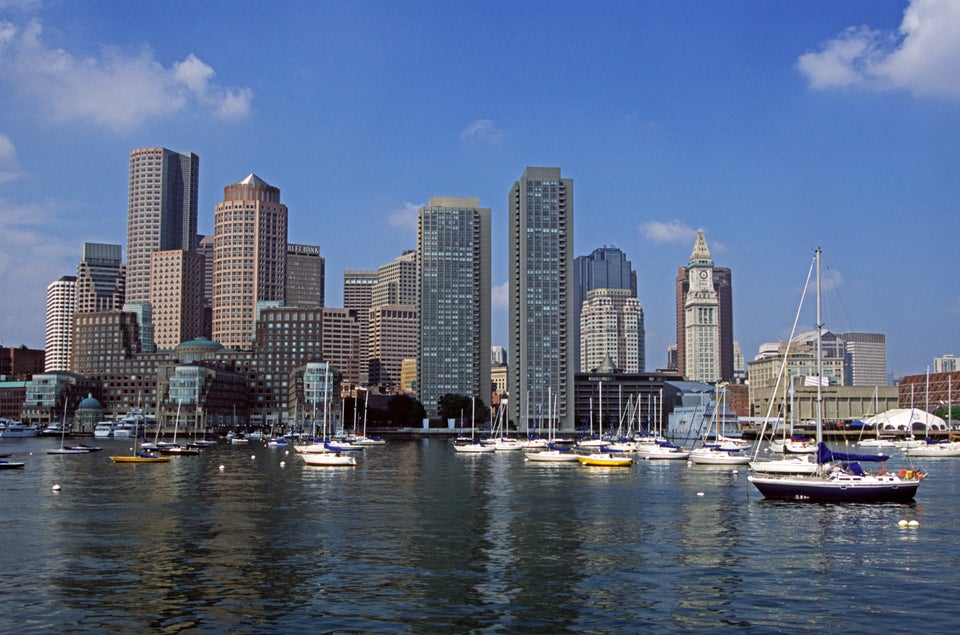
Bloomberg View
Last month, we discussed McDonald's and Wal-Mart as America’s biggest welfare queens. As it turns out, both giants are the beneficiaries of a surprising amount of federal aid: Their employees receive an inordinate amount of Medicaid, food stamps and other public assistance. This allows them to maintain very low wages, and keep profits relatively robust.
I wondered aloud at why profitable, publicly traded private sector companies were receiving so much taxpayer largess. With these corporations having their full-time employees’ paychecks effectively subsidized by taxpayers, I decided to do a little do more digging. What I found about minimum wages in the U.S. surprised me. I suspect it will surprise you, too.
We begin with a little minimum wage background: In the U.S., it is currently pegged at $7.25 an hour. The law mandating these wages began post-depression in 1938 at 25 cents an hour. (New Zealand beat us by 40 years). Individual states have the option to mandate a higher minimum wage, and about half of them do, with Washington State requiring the highest pay at $9.19/hour. Among developed economies, Australia and Luxembourg have the highest minimum wages ($15.75 and $14.21 respectively), while the other end of the scale includes Korea ($3.90), Poland ($2.69) and Hungary ($2.24), according to the Organization for Economic Cooperation and Development. The U.S. sits in the middle of the range.
More from Bloomberg View:
-- How McDonald's and Wal-Mart Became Welfare Queens
-- Better News on Workforce Dropouts: Ritholtz Chart
Here’s where things get interesting: A full-time worker (40 hours a week) in the U.S. making minimum wage earns only $15,080 a year. For some context, median individual earnings are $40,404 a year (BLS), while the U.S. poverty level is $23,550 (HHS). Full-time minimum wage earners make 62.7 percent less than median income and are 36.0 percent below the poverty level. (The number you probably hear quoted most often is median household income at $51,017, according to the census. The minimum is 70.4 percent below that).
If the minimum wage had merely kept up with price inflation since 1968, it would currently be at $10.77. That is $22,401.60 per year, bringing wages closer to the poverty line. Beyond inflation, if it kept pace with productivity increases, it would be closer to $20 per hour; annual salary would be $41,600, higher than the U.S. median. And just for laughs, if the minimum wage kept up with the earnings of the top 1 percent, it would be higher than $22, or about $45,760.
What does all of this have to do with McDonald's and Wal-Mart? Plenty. As Bloomberg Businessweek reported earlier this year, net total public assistance to the fast-food industry is about $7 billion dollars. (This does not include future medical costs associated with diabetes or heart disease). If the minimum wage were suddenly raised to $15, it would drive fast-food prices 25 percent higher, adding a $1 to the cost of a Big Mac.
As the accompanying chart shows, employees of the industry receive more taxpayer aid than any other sector:

Just how much? More than half (52 percent) of the families of fast-food workers receive some form of public assistance. That’s more than double the rate of the workforce as a whole. Most of it is through Medicaid and the Children’s Health Insurance Program ($4 billion), while the Earned Income Tax Credit, food stamps, and Temporary Assistance for Needy Families program are the rest ($3 billion).
Of the 3.9 million fast-food employees in U.S., the biggest group of workers are employed by McDonald’s. Estimates are their employees have received public assistance of about $1.2 billion a year since 2007. (Source: University of California at Berkeley’s Labor Center and the University of Illinois at Urbana-Champaign)
Another surprise about fast-food workers: They are no longer mostly teenagers. More than two-thirds are adults; more than one in four are raising children.
I cannot fathom why my Libertarian friends are against raising the minimum wage, but OK with massive corporate subsidies.
As someone who does not especially care for fast food -- I worked in a McDonald's in high school, and lasted less than a weekend -- I do not support my tax dollars subsidizing large and profitable companies. Raising the minimum wage to $11.33, the poverty level, effectively shifts the cost of eating greasy French fries and overcooked burgers from taxpayers to fast food consumers -- where they belong.
Coming tomorrow: All about the minimum wage and Wal-Mart
